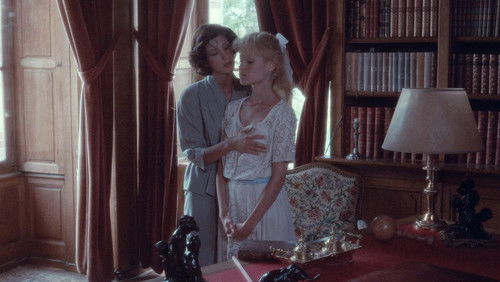1001 Nacht: Volume 1: Der Ruhelose (2015)
64K1001 Nacht: Volume 1: Der Ruhelose: Directed by Miguel Gomes. With Crista Alfaiate, Miguel Gomes, Maria Rueff, Bruno Bravo. Some of the chapters from Arabian Nights are adapted to a modern Portugal in this epic.
“The pressures of the social obligations from the recent Portuguese economic crisis in how to approach this loose adaptation of u0026quot;One Thousand And One Nightsu0026quot; cut deep into director Miguel Gomes. He satisfied his anxiety by including his own personal struggle with a humorous twist in the first thirty minutes of his sprawling 6-hour Arabian Nights. Spliced between dual documentaries about a shipyard closure and wasp exterminators, Gomes – appearing on screen – literally evades his camera crew while they take chase. His nerves reflect the angst of the Portuguese people, but his eventual resolve in ultimately completing the film is a promising hint of hope, at least in a way to defy the government.u003cbr/u003eu003cbr/u003eThe opening of each volume of Arabian Nights – entitled u0026quot;The Restless Oneu0026quot;, u0026quot;The Desolate Oneu0026quot; and u0026quot;The Enchanted Oneu0026quot; respectively – begin with a direct message from Gomes to establish what to expect, as well as to provide a pseudo-mission statement. It declares how this is not a direct adaptation despite drawing on the structure and the vignettes are based on events that happened between 2013 and 2014 where Portugal was u0026#39;held hostageu0026#39; by its negligent government. The film always appears to have one step out of its fiction, but itu0026#39;s justified by its documentary prologue. The framing for the format, something that should be somewhat familiar to most, shows a Queen called Scheherazade who has to tell her King compelling stories and cut them off at night to ensure he wants to hear the rest of the story the next day to evade him killing her, and thus future Queens.u003cbr/u003eu003cbr/u003eIn adapting the spirit of the classic set of tales, it gives Gomes the freedom to explore different types of styles going from fantasy, to documentary, to fiction, to docu-fiction, and sometimes blending them together. As each story isnu0026#39;t firmly attached to a single protagonist, the film frequently has irreverent tangents with subplots briefly taking the foreground. While people may be on screen without an arc, itu0026#39;s a clear goal of the film to show how each individual has a rich full life with their own dramas that affect others too. It turns these modern day struggles into myths – and also shows how those myths are worthy enough to engage a hypothetical King. In employing non-actors, it continues to blur that line between fiction and nonfiction and makes Arabian Nights a film for the people while the subdued emotion of them soaks through.u003cbr/u003eu003cbr/u003eDespite initially intended to be a single 6-hour feature, each of the three volumes are quite different in style and quality. The first volume is dense and absurd, both the most inaccessible and accessible part depending on how you feel about Gomesu0026#39; approach. Itu0026#39;s rewarding for those willing to traverse it. After introducing the values of the film with the opening documentary and the concept for its format in showing Scheherazade and her people coming up with the stories, the first vignette is the most bizarre and perhaps immature given the weight of the film. It travels with a group of impotent capitalists who are cursed with permanent erections and how that affects their attitudes to how they influence Portugalu0026#39;s financial. Itu0026#39;s hilarious and thoughtful, showing just how on-the-nose but equally on-point Arabian Nights is willing to get. Volume 1u0026#39;s energy and unabashed direction earned a grin on my face whenever it wasnu0026#39;t documenting distress.u003cbr/u003eu003cbr/u003eThe following vignettes include one about a talking cockerel whou0026#39;s a controversial point in a town as he crows loudly in the early morning, though his intentions are to warn about wildfires, and another where a man disgruntled by the economy and arranges other unemployed people to join in a New Yearu0026#39;s Day swim in the ocean as an act of defiance against the government. Each person tells their story – or their story is told by Scheherazade – and their hardships of their money going to waste are easy to empathise with, especially if youu0026#39;ve experienced dejection such as theyu0026#39;re facing. Like his masterful previous film Tabu – a diptych of sorts while Arabian Nights is a triptych within a triptych – this film also has an old-fashioned style. It has the rawness and vibrancy of the films of the 70s, though that aesthetic may not be as deliberate as Tabuu0026#39;s 1930s style.u003cbr/u003eu003cbr/u003eSee the other volumes for the rest of my review for Arabian Nights.u003cbr/u003eu003cbr/u003e8/10u003cbr/u003eu003cbr/u003eRead more @ The Awards Circuit (http://www.awardscircuit.com/)”









